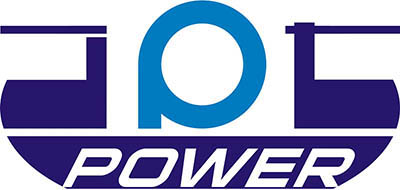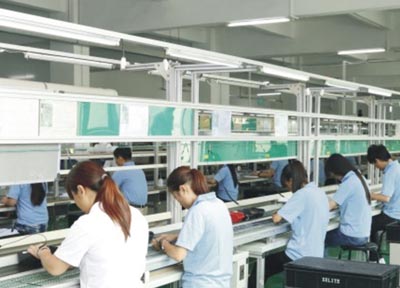What is a power adapter used for
A power adapter, also known as a wall adapter or an AC-DC adapter, is an electronic device that converts electrical energy from an AC source to a lower DC voltage suitable for use by electronic devices.
Power adapters are commonly used to power and charge a variety of consumer electronics, such as laptops, smartphones, and tablets, as well as smaller devices such as routers, cameras, and portable speakers.
They usually consist of a plug that connects to an AC outlet and a cable with a DC output connector that connects to the device. Power adapters come in different sizes, shapes, and voltage ratings depending on specific equipment requirements.
Types of Power Adapters
Here is a more detailed breakdown of power adapter types:
AC Adapter:
- – Convert alternating current (AC) to direct current (DC)
- – Typically used to power low voltage equipment
- – Available in various sizes and voltages to meet different equipment requirements
- – Can be classified as a “plug-in” or “wall” AC adapter
DC Adapter:
- – Convert direct current (DC) to another voltage or current level
- – Typically used when the power supply of the device does not match its power requirements
- – Can be used to increase or decrease voltage, or convert AC to DC
Universal Adapter:
- – Designed to be compatible with a variety of different devices
- – Often with multiple tips/connectors to suit different devices
- – Available for AC and DC input
- – May have adjustable voltage and current levels to suit different equipment requirements
How Power Adapters Work
Here is a more detailed breakdown of how power adapters work:
Current and voltage:
- – Electric current is the flow of charge
- – Voltage is a measure of electric potential energy per unit charge
- – Current flows from high voltage to low voltage, higher current can be achieved by increasing the voltage
Principle of power conversion:
- – Power conversion is the process of changing the form of electrical energy
- – Power adapters use a transformer to convert power from one voltage to another
- – Power adapters usually also include a rectifier circuit that converts AC to DC
Step-down transformer:
- – A step-down transformer reduces the voltage of the AC mains
- – This is achieved by using more turns of wire on the input (high voltage) side of the transformer than on the output (low voltage) side
- – The voltage drop is proportional to the turns ratio on each side of the transformer
Step-up transformer:
- – A step-up transformer boosts the voltage of the AC mains
- – This is achieved by using more turns of wire on the output (high voltage) side of the transformer than the input (low voltage) side
- – The voltage increase is proportional to the turns ratio on each side of the transformer
Common Uses for Power Adapters
Here are more detailed descriptions of common uses of power adapters:
1. Charging electronic devices: Power adapters are often used to charge electronic devices such as laptops, smartphones, and tablets. These adapters typically provide a low-voltage direct current (DC) output suitable for charging the batteries of these devices. The voltage and current rating of the adapter must be compatible with the device being charged to prevent damage to the battery or adapter.
2. Powering electrical appliances: Power adapters are also used to power various household devices, such as TVs, game consoles, routers, and other electrical appliances. These adapters can provide low voltage DC output or high voltage alternating current (AC) output, depending on the requirements of the powered equipment. Devices that use a power adapter usually have a power input jack designed to accept a specific type of adapter.
3. Low-voltage lighting system: Power adapters are often used in low-voltage lighting systems, which convert household AC power into low-voltage DC output, which can be safely used in lighting fixtures. These systems typically include a transformer that steps down the AC input voltage and a rectifier circuit that converts the transformer’s AC output to a DC output.
Overall, power adapters are an essential part of many electronic devices and appliances, providing the correct voltage and current needed to function properly.
Choosing the Right Power Adapter
These three key factors to consider when choosing a power adapter are explained in more detail here:
1. Match voltage and polarity: It is important to match the voltage and polarity of the power adapter with the device you will be using. The voltage should match the rated voltage of the equipment, and the polarity should match the equipment’s requirements for positive and negative connections. Using an adapter with the wrong voltage or polarity may damage the device or even pose a safety hazard.
2. Understand the input/output specifications: In addition to voltage and polarity, it is also important to understand the input and output specifications of the power adapter. The input specification will tell you what type of power source the adapter is designed to use (such as AC or DC), as well as the voltage and current rating of the input. The output specification will tell you the voltage and current rating of the output, as well as the connector type and any additional features, such as surge protection or noise filtering.
3. Safety considerations and certifications: When choosing a power adapter, safety should be a top priority. Look for adapters that have been certified by safety organizations such as UL (Underwriters Laboratories) or CE (Conformité Européene), as these certifications indicate that the adapter has been tested and approved for safe use. You should also consider features like overvoltage protection, short circuit protection, and thermal protection to ensure the adapter doesn’t cause damage to your equipment or create a safety hazard.
Troubleshooting Power Adapters
There are several common problems that power adapters can experience, including:
1. No Power: If your power adapter doesn’t turn on, the problem could be with the power supply or the adapter itself. Try plugging it into a different outlet, or using a different power cord, and see if that fixes the problem. If not, the adapter may need repair or replacement.
2. Overheating: If the adapter is overheating, it could be a sign of a component failure or insufficient power supply. Try unplugging it and letting it cool down before using it. If the problem persists, the adapter may need to be replaced.
3. Loose connection: If the adapter is not properly connected to the device or power source, it may not work properly. Check all connections and make sure they are secure.
4. Overload: If the device you’re using the adapter for consumes too much power, the adapter may not be able to provide enough power to run the device. Try using a higher rated adapter or reducing the power consumption of the device.
When deciding whether to repair or replace your power adapter, consider the cost and complexity of the repair, the availability of replacement parts, and the age and condition of the adapter. If the adapter is relatively new and the problem is not major, repairing it may be a good option. However, if the adapter is old or fails frequently, it may be more cost-effective to replace it with a new one.
Also, if the adapter is damaged or showing signs of wear, it may be safer to replace it to avoid potential hazards.
Conclusion
The power adapter is an important component in providing the correct power to your device. They may experience common problems such as dead power, overheating, loose connections and overloading. When deciding to repair or replace your power adapter, consider cost, complexity, parts availability, age, condition, and safety. It is important to use the correct power adapter for each application to ensure safety, compatibility and optimal performance.
In conclusion, proper care and use of power adapters can prevent potential hazards, prolong the life of your equipment, and save you time, money, and frustration. Always follow the power adapter manufacturer‘s instructions and use the correct power adapter for each device to avoid damage, malfunction or accident. If you have any doubts or doubts about your power adapter, please consult a qualified technician or the manufacturer for guidance.


